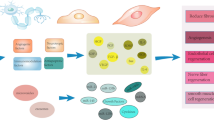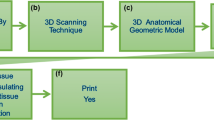Abstract
The objective of this study was to investigate whether intraperitoneal incubation improves the regenerative capacity of bladder acellular matrix grafts (BAMGs) in a rat model of bladder augmentation. After 2 weeks of incubation in the peritoneum of male rats, BAMG flaps with vascular pedicles were harvested for autologous bladder augmentation. As the control, BAMGs were directly used for bladder augmentation without intraperitoneal incubation. Histological analyses of the incubated BAMGs demonstrated extensive cell growth and vasculature in homogeneous collagen bundles. The cells were positive for vimentin and negative for α-smooth muscle actin and pan-cytokeratin AE1/AE3. Cystography revealed smoother contours of the augmented bladders in the incubated group at 4 and 12 weeks postoperatively. However, the bladder capacity was not significantly different between the two groups. In both groups, the entire urothelium regenerated well without obvious differences. At both time points, compared with the control group, increased numbers of smooth muscle cells (SMCs) and blood vessels were found in the incubated group. At 12 weeks, the SMCs in the incubated group were more similar to those in the native smooth muscle fiber bundles of the bladder. Taken together, our results demonstrated that BAMGs preincubated in the peritoneum promote the regeneration of bladder smooth muscle via neovascularization in a rat bladder augmentation model.
Similar content being viewed by others
References
Kaefer, M., W. H. Hendren, S. B. Bauer, P. Goldenblatt, and C. A. Peters (1998) Reservoir calculi: A comparison of reservoirs constructed from stomach and other enteric segments. J. Urol. 160: 2187–2190.
Jack, G. S., R. Zhang, M. Lee, Y. H. Xu, and B. M. Wu (2009) Urinary bladder smooth muscle engineered from adipose stem cells and a three dimensional synthetic composite. Biomaterials 30: 3259–3270.
Zhu, W. D., Y. M. Xu, C. Feng, Q. A. Fu, and L. J. Song (2010) Bladder reconstruction with adipose-derived stem cell-seeded bladder acellular matrix grafts improve morphology composition. World J. Urol. 28: 493–498.
Atala, A., S. B. Bauer, S. Soker, J. J. Yoo, and A. B. Retik (2006) Tissue-engineered autologous bladders for patients needing cystoplasty. Lancet 367: 1241–1246.
Caione, P., R. Boldrini, A. Salerno, and S. G. Nappo (2012) Bladder augmentation using acellular collagen biomatrix: A pilot experience in exstrophic patients. Pediatr. Surg. Int. 28: 421–428.
Kim, B. S., A. Atala, and J. J. Yoo (2008) A collagen matrix derived from bladder can be used to engineer smooth muscle tissue. World J. Urol. 26: 307–314.
Zhu, W. D., Y. M. Xu, C. Feng, Q. Fu, and L. J. Song (2011) Different bladder defects reconstructed with bladder acellular matrix grafts in a rabbit model. Urol, 50: 1420–1425.
Akbal, C., S. D. Lee, S. C. Packer, M. M. Davis, and R. C. Rink (2006) Bladder augmentation with acellular dermal biomatrix in a diseased animal model. J. Urol. 176: 1706–1711.
Brown, A. L., W. Farhat, P. A. Merguerian, G. J. Wilson, and A. E. Khoury (2002) 22 week assessment of bladder acellular matrix as a bladder augmentation material in a porcine model. Biomaterials 23: 2179–2190.
Kajbafzadeh, A. M., A. Tourchi, A. A. Mousavian, L. Rouhi, and S. M. Tavangar (2014) Bladder muscular wall regeneration with autologous adipose mesenchymal stem cells on three-dimensional collagen-based tissue-engineered prepuce and biocompatible nanofibrillar scaffold. J. Pediatr. Urol. 10: 1051–1058.
Coutu, D. L., W, Mahfouz, O, Loutochin, J, Galipeau, and J. Corcos (2014) Tissue engineering of rat bladder using marrowderived mesenchymal stem cells and bladder acellular matrix. PLoS One 9: e111966.
Yokoyama, T., J. Huard, R. Pruchnic, N. Yoshimura, and Z. Qu (2001) Muscle-derived cell transplantation and differentiation into lower urinary tract smooth muscle. Urol. 57: 826–831.
Joseph, D. B., J. G. Borer, R. E. De Filippo, S. J. Hodges, and G. A. McLorie (2014) Autologous cell seeded biodegradable scaffold for augmentation cystoplasty: Phase II study in children and adolescents with spina bifida. J. Urol. 191: 1389–1395.
Loai, Y., H. Yeger, C. Coz, R. Antoon, and S. S. Islam (2010) Bladder tissue engineering: Tissue regeneration and neovascularization of HA-VEGF-incorporated bladder acellular constructs in mouse and porcine animal models. J. Biomed. Mater. Res. A. 94: 1205–1215.
Gu, G. L., Y. J. Zhu, S. J. Xia, J. Zhang, and J. T. Jiang (2010) Peritoneal cavity as bioreactor to grow autologous tubular urethral grafts in a rabbit model. World J. Urol. 28: 227–232.
Fu, Q., C. L. Deng, W. Liu, and Y. L. Cao (2007) Urethral replacement using epidermal cell-seeded tubular acellular bladder collagen matrix. BJU International 99: 1162–1165.
Seth, A., Y. G. Chung, E. S. Gil, D. Tu, and D. Franck (2013) The performance of silk scaffolds in a rat model of augmentation cystoplasty. Biomaterials 34: 4758–4765.
Yuan, H., Y. Zhuang, J. Xiong, W. Zhi, and L. Liu (2013) Human umbilical mesenchymal stem cells-seeded bladder acellular matrix grafts for reconstruction of bladder defects in a canine model. PLoS One 8: e80959.
Zhen, H. N., X. Zhang, P. Z. Hu, T. T. Yang, and Z. Fei (2005) Survivin expression and its relation with proliferation, apoptosis, and angiogenesis in brain gliomas. Cancer 104: 2775–2783.
Brown, A. L., T. T. Brook-Allred, J. E. Waddell, J. White, and J. A. Werkmeister (2005) Bladder acellular matrix as a substrate for studying in vitro bladder smooth muscle-urothelial cell interactions. Biomaterials 26: 529–543.
Reddy, P. P., D. J. Barrieras, G. Wilson, D. J. Bagli, and G. A. McLorie (2000) Regeneration of functional bladder substitutes using large segment acellular matrix allografts in a porcine model. J. Urol. 164: 936–941.
Probst, M., H. J. Piechota, R. Dahiya, and E. A. Tanagho (2000) Homologous bladder augmentation in dog with the bladder acellular matrix graft. BJU Int. 85: 362–371.
Falke, G., J. Caffaratti, and A. Atala (2000) Tissue engineering of the bladder. World J. Urol. 18: 36–43.
Song, L., L. Wang, P. K. Shah, A. Chaux, and B. G. Sharifi (2010) Bioengineered vascular graft grown in the mouse peritoneal cavity. J. Vasc. Surg. 52: 994–1002.
Campbell, G. R., G. Turnbull, L. Xiang, M. Haines, and S. Armstrong (2008) The peritoneal cavity as a bioreactor for tissue engineering visceral organs: Bladder, uterus and vas deferens. J. Tissue Eng. Regen. Med. 2: 50–60.
Zhang, J., G. L. Gu, G. H. Liu, J. T. Jiang, and S. J. Xia (2012) Ureteral reconstruction using autologous tubular grafts for the management of ureteral strictures and defects: An experimental study. Urol. Int. 88: 60–65.
Laschke, M. W., Y. Harder, M. Amon, I. Martin, and J. Farhadi (2006) Angiogenesis in tissue engineering: Breathing life into constructed tissue substitutes. Tissue Eng. 12: 2093–2104.
Le, S. J., M. Gongora, B. Zhang, S. Grimmond, and G. R. Campbell (2010) Gene expression profile of the fibrotic response in the peritoneal cavity. Differentiation 79: 232–243.
Lu, M., G. Zhou, W. Liu, Z. Wang, and Y. Zhu (2010) Remodeling of buccal mucosa by bladder microenvironment. Urol. 75: e1517–1524.
Iijima, K., Y. Igawa, T. Imamura, T. Moriizumi, and T. Nikaido (2007) Transplantation of preserved human amniotic membrane for bladder augmentation in rats. Tissue Eng. 13: 513–524.
Anderson, J. M., A. Rodriguez, and D. T. Chang (2008) Foreign body reaction to biomaterials. Semin. Immunol. 20: 86–100.
Badylak, S. F. and T. W. Gilbert (2008) Immune response to biologic scaffold materials. Semin. Immunol. 20: 109–116.
Piechota, H. J., C. A. Gleason, S. E. Dahms, R. Dahiya, and L. S. Nunes (1999) Bladder acellular matrix graft: In vivo functional properties of the regenerated rat bladder. Urol. Res. 27: 206–213.
Gill, N. A. and A. Hameed (2011) Management of hypospadias cripples with two-staged Bracka’s technique. J. Plast. Reconstr. Aesthet. Surg. 64: 91–96.
Author information
Authors and Affiliations
Corresponding authors
Additional information
These authors contributed equally to this work and should be viewed as co-first authors.
Rights and permissions
About this article
Cite this article
Zhou, Z., Zhang, M., Xu, M. et al. Intraperitoneal incubation of bladder acellular matrix grafts improves bladder smooth muscle regeneration via neovascularization. Biotechnol Bioproc E 20, 523–531 (2015). https://doi.org/10.1007/s12257-014-0705-1
Received:
Revised:
Accepted:
Published:
Issue Date:
DOI: https://doi.org/10.1007/s12257-014-0705-1




